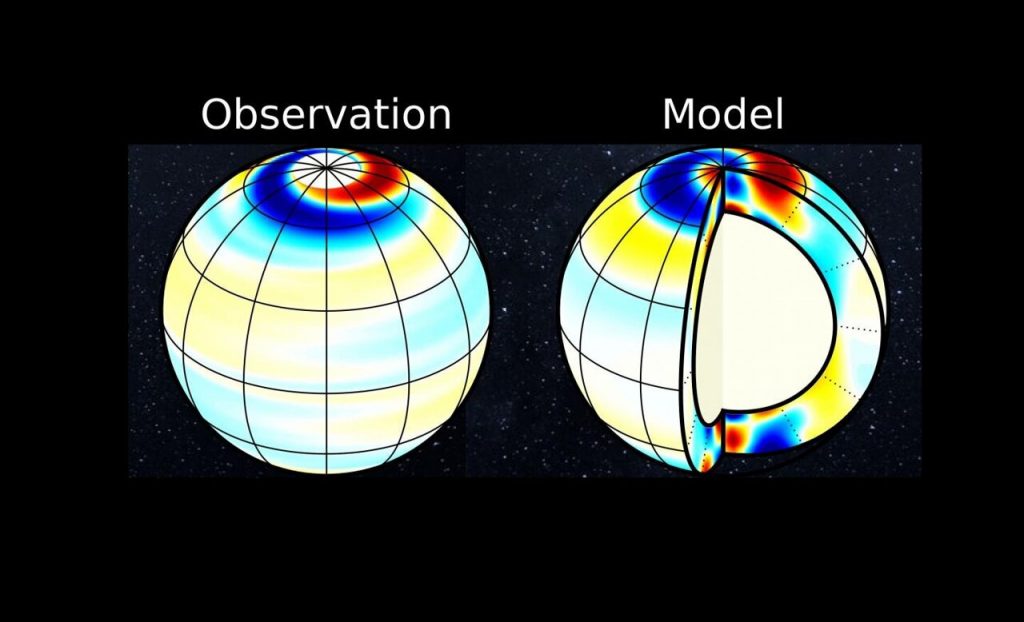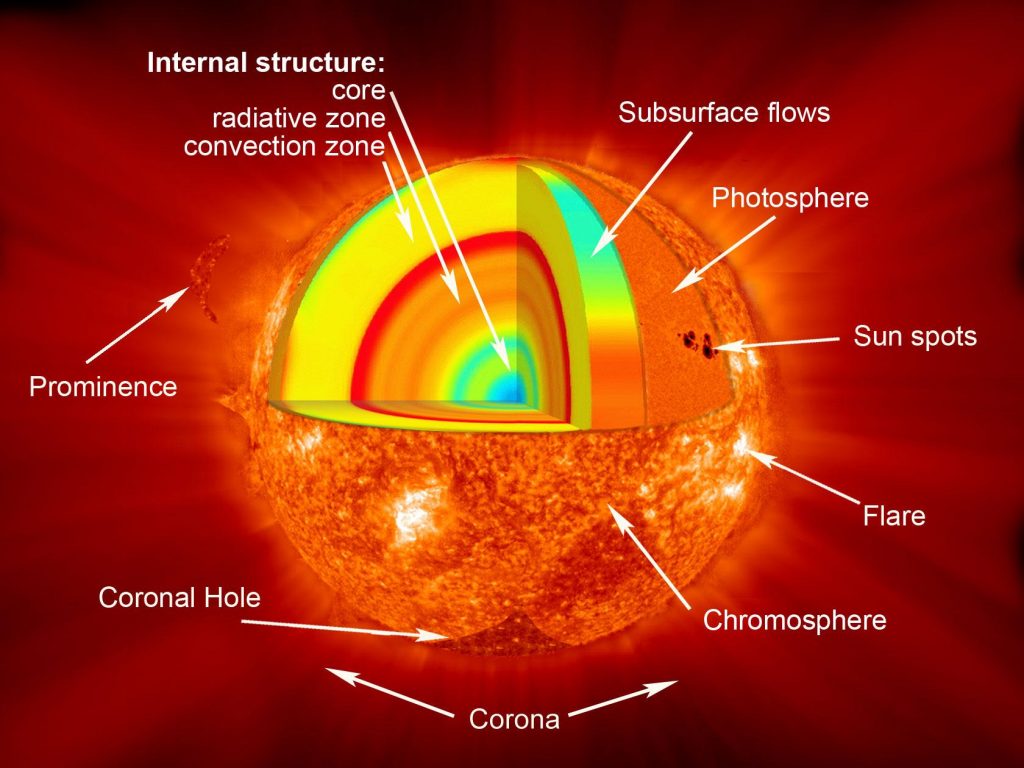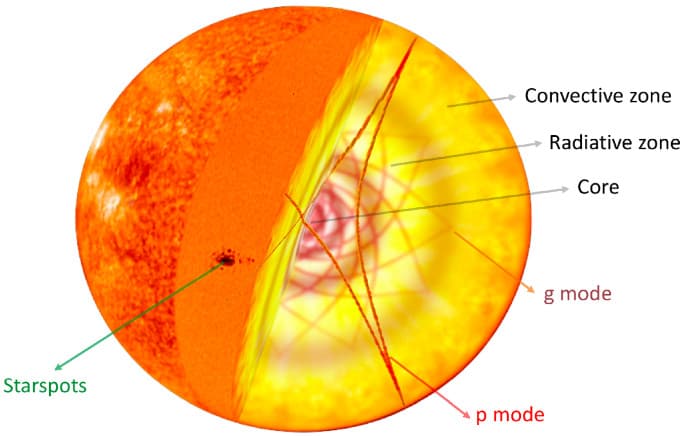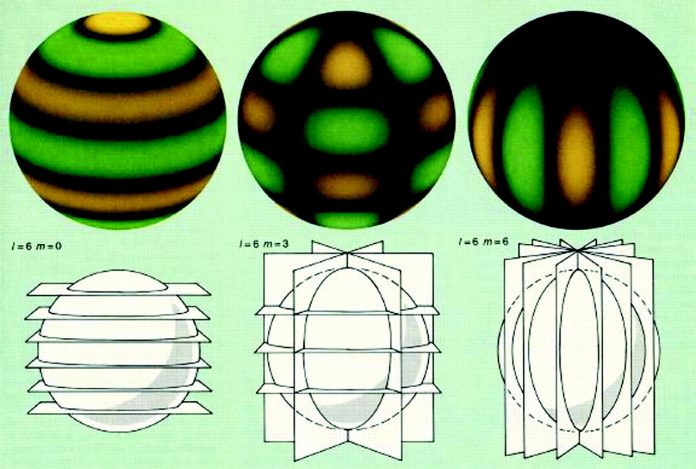Terrestrial seismology – the scientific study of the vibrations produced by earthquakes or controlled explosions – is a well known technique for investigating the interior structure of the Earth. As the name might suggest, ‘helioseismology’ is used to probe the interior of the Sun.
Global Oscillations of the Sun
The science of helioseismology is based on observations of vibrations of the Sun’s surface, or photosphere. By measuring the Doppler shift of the spectrum of the photosphere, irregular, localized rises and falls of many kilometres’ amplitude are seen. These occur over just a few minutes and move at speeds of up to five hundred metres per second.

The waves are generated by turbulence just beneath the photosphere, and though apparently chaotic, are not as random as they seem. In fact, they arise in a predictable manner from the combined effect of many individual vibrations of the entire solar surface known as ‘global oscillations’. Each global oscillation repeats itself over a characteristic period of time, and penetrates beneath the photosphere to a depth that depends on the frequency with which it repeats.
Some global oscillations travel only a short distance into the Sun before they encounter a change in density and are bounced back to the surface. Others travel further, and some low-frequency oscillations may pass straight through the Sun’s core.
Since conditions within the Sun influence the contribution of each global oscillation to the whole (and thus the pattern of the observed surface vibrations), the study of these waves provides information on the structure of the Sun’s interior.
Measuring Solar Temperature

An important application of helioseismology has been in measuring the internal temperature of the Sun. These experiments are based on the fact that the speed of sound in a gas depends on the temperature of that gas. By determining the speed of sound in different regions of the Sun, it has been found that the measured speed generally differs only a little (less than one per cent) from that predicted by theoretical models of the solar interior.
Through helioseismology, the temperature of the Sun’s core has been shown to be more than ten million degrees. Overall, the internal temperature of the Sun seems to be well described by the theoreticians’ models, though in some regions the experimental findings have deviated from the predictions. These results have been used to improve the models.
Beyond the Sun, Asteroseismology

Closely related to helioseismology is the field of asteroseismology, which studies the internal structure of pulsating stars by observing changes in their spectra. Another exciting application is in the study of neutron stars – the small, incredibly dense remnants of supernova explosions.
Vibrations in the Photosphere, Seeing the Sun
As the study of terrestrial vibrations continues to provide information on the structure of the Earth, the study of the natural oscillations of the Sun is shedding light on the hidden interior of the closest star.


















